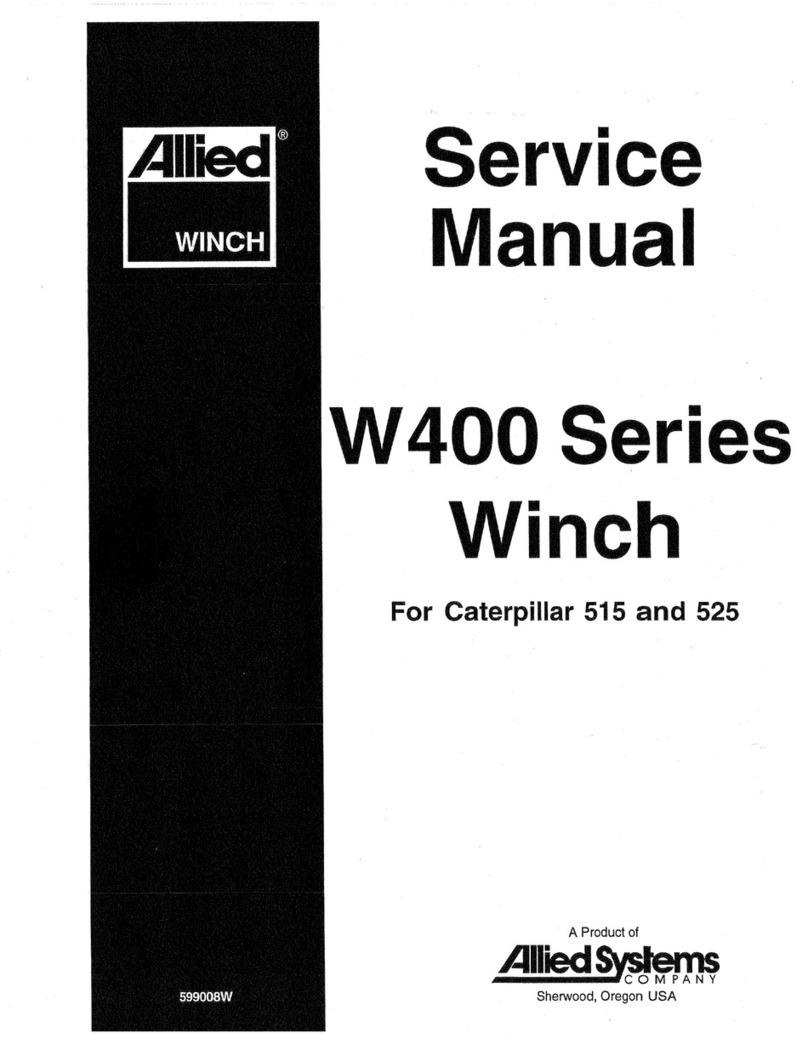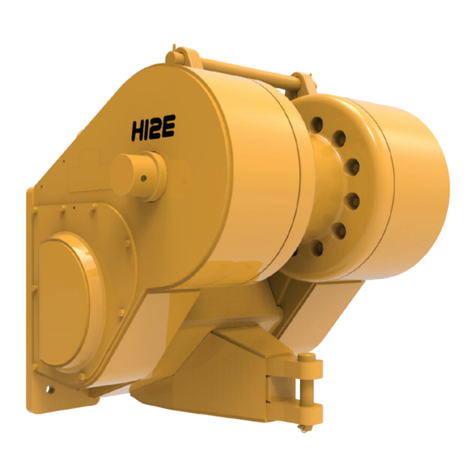
v
Contents
Safety Summary ......................................................... i
Section 1: General ..................................................1-1
Introduction...............................................................1-1
Description ...............................................................1-1
Unit Identification ...............................................1-2
Installation Drawings ..........................................1-4
Serial Number Codes.........................................1-5
Nameplate .........................................................1-5
Warning and Maintenance Decals .....................1-5
Gear Train ................................................................1-6
Operation and Control ..............................................1-8
Capacities & Specifications ....................................1-11
Recommended Oil List.....................................1-11
Winch Oil Capacity...........................................1-11
Hydraulic Specifications...................................1-11
Bolt Torque Specifications................................1-12
Section 2: Power/Cable Controls ..........................2-1
Hydraulic System .....................................................2-1
Forward & Reverse Clutches .............................2-2
Oil Brake ............................................................2-3
Hydraulic Control Valve ......................................2-3
Hydraulic Control Relief Valve............................2-3
Hydraulic Pump..................................................2-3
Accumulators .....................................................2-5
Accumulator Valve..............................................2-5
Check Valve .......................................................2-5
Cooling Oil Relief Valve......................................2-5
Sequence of Operation ......................................2-6
- BRAKE-ON ......................................................2-6
- LINE-IN ............................................................2-7
- LINE-OUT ........................................................2-8
- LINE-OUT INCHING........................................2-9
- BRAKE OFF ..................................................2-10
Service ...................................................................2-11
Maintenance Points..........................................2-11
Maintenance Schedule ....................................2-11
Checks Before Operation.................................2-12
Checks During Operation.................................2-12
Checks and Adjustments .................................2-12
Control Cable Adjustments ..............................2-12
Hydraulic System Pressure Checks.................2-13
Preparation ......................................................2-13
Pressure Gauges ............................................2-13
Brake Pressure Check .....................................2-13
Cooling Oil Pressure Check.............................2-15
Accumulator Pressure Check...........................2-15
Forward Clutch Pressure Check and Forward
Modulator Valve Check ....................................2-15
Reverse Clutch Pressure Check and Reverse
Modulator Valve Check ....................................2-16
Control Valve Spool Travel Check ....................2-16
Hydraulic Systems Pressure Tests Chart.........2-17
Troubleshooting ......................................................2-18
Troubleshooting Analysis Check Chart
for Power Controls ...........................................2-18
Section 3: Electronic Controls ..............................3-1
Hydraulic System......................................................3-1
Valve Manifold Assembly
& Hydraulic Schematic.......................................3-2
Relief Valve ......................................................3-10
Forward & Reverse Clutches ...........................3-10
Oil Brake ..........................................................3-10
Accumulator Valve ...........................................3-10
Check Valve .....................................................3-10
Sequence of Operation (for Old Manifold)........3-11
- BRAKE-ON ...................................................3-11
- LINE-IN .........................................................3-12
- LINE-OUT .....................................................3-13
- BRAKE OFF .................................................3-14
Sequence of Operation (for New Manifold) ......3-15
- BRAKE-ON ...................................................3-15
- LINE-IN .........................................................3-16
- LINE-OUT .....................................................3-17
- BRAKE OFF .................................................3-18
Electronic Control Module................................3-19
LED States For Various Functions ...................3-19
Input / Output Functions...................................3-20
Electronic Control Program Diagram ...............3-20
DVC10 Electronic Schematic ...........................3-21
Service ...................................................................3-25
Maintenance Points..........................................3-25
Maintenance Schedule ....................................3-25
Checks Before Operation.................................3-26
Checks During Operation.................................3-26
Control Lever Lubrication & Adjustment...........3-26
Control Lever Detent Pin Lubrication ...............3-26
Adjusting Joystick Detent Force.......................3-26
Types of Electronic Controls Levers.................3-27
Hydraulic System Pressure Check...................3-28
Preparation ...................................................3-28
Pressure Gauges..........................................3-28
Brake Pressure Check ..................................3-28
Cooling Oil Pressure Check..........................3-28
Accumulator Pressure Check .......................3-28
Forward Clutch Pressure Check ...................3-29
Reverse Clutch Pressure Check...................3-29
Hydraulic Pressure Test Ports.......................3-30
Hydraulic System Pressure Test Chart .........3-32
Contents
(continued on next page)






























